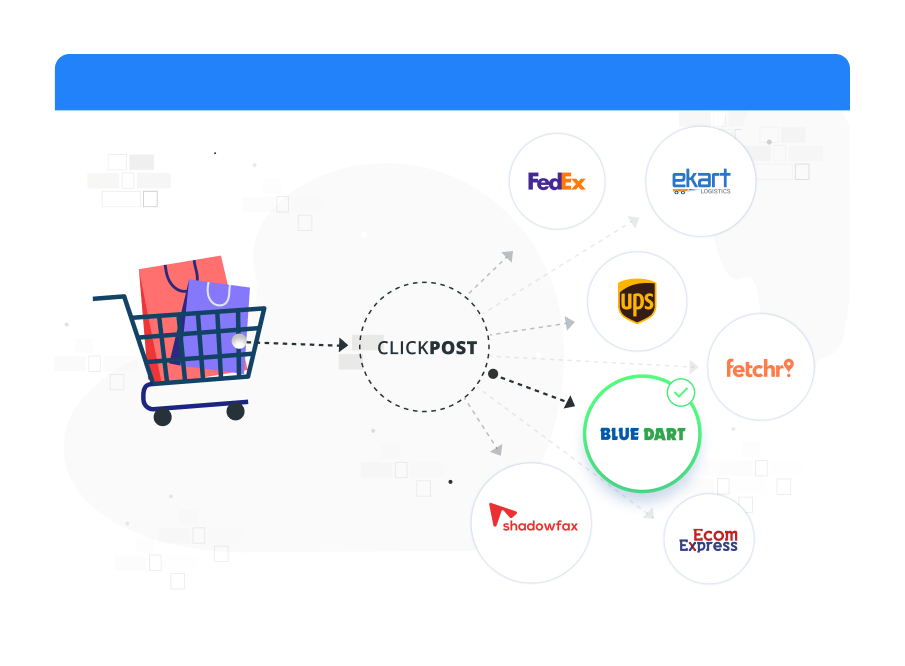All-in-one logistics management platform for enterprises
Using data-driven intelligence to deliver incredible post-purchase experience to your customers.








ClickPost- Post Purchase Customer Experience Software
Grow Your Business With The World’s Fastest-Growing Logistics Intelligence Platform for Automated Shipping And Post-Purchase Solutions.
-
Increase Conversions
-
Retain Customers
-
Reduce RTO%
-
Boost Order Tracking
-
Offer Accurate EDDs
Improve shipping
Use a single API for easy order creation, order cancellation, and order editing even after manifestation
Increase serviceability
Leverage our ML-powered courier recommendation engine for global deliveries with 300+ carriers
Reduce customer calls
Improve order tracking visibility and notify customers with our multi-channel notification suite
Reduce exceptions
Swiftly handle shipment delays and SLA breaches and give customers a reason to stay with you forever
Increase serviceability
Proactively resolve last-mile shipping challenges with our failed delivery exceptions management tool
Reduce customer calls
Seamlessly handle returns and exchanges with our all-in-one automated returns management solution

Ship Anywhere With 500+ Carriers
- Onboard with 500+ pre-integrated carrier within a day and schedule your deliveries anywhere in the world.
-
Give the best delivery experience to your customers by choosing a carrier fit for them with our data-based courier allocation engine.
-
Easily generate multiple shipping labels, AWBs, and return labels from our unified dashboard or API.
- Get accurate EDDs and encourage your customers to complete their checkout.
Get End-To-End Shipment Visibility
Get real-time shipment visibility with robust push and pull APIs and webhooks to help track orders across all carriers from a unified dashboard.
Notify customers with milestone-specific updates in multiple channels- SMS, WhatsApp, IVRS, and Emails.
Build a customizable branded tracking page to promote cross-selling with features like intelligent product recommendations and capture customer feedback.

Deliver a Positive Returns Experience
Avoid customer churn with a self-service returns portal configured to your returns policy and automatically accept/reject requests.
Conveniently handle carrier selection with an ML-built courier selection engine based on customer context and business priorities.
Increase customer engagement with timely return notifications and monitor shipment status from a single portal to ensure timely refund.

Reduce Delivery and Pickup Exceptions
Categorically identify delivery exceptions and failed deliveries using carrier updates with our NDR and NPR protocols.
Seek issue-specific responses from customers by triggering a communication workflow across multiple channels.
Implement an OTP-based cancellation plan to process and authenticate cancellation requests and streamline SLA breaches.

All-In-One Technology Solutions to Upscale Your Business
> Seamless Integration with Scalable APIs
ClickPost’s developer-friendly and easy-to-use API plugs into your existing system enabling full control over order creation, order tracking, returns, and other utilities.
> 300 carriers and counting
ClickPost is pre-integrated with carriers across the world and holds the capacity to integrate with any carrier of your choice.
> 50 Technology Partners
ClickPost supports a mix of digital tech partners spanning eCommerce storefronts, WMS, and communication gateways that easily plug into your native systems.
Don’t take our word for it, hear it from the market leaders
Amazing product for managing 3PL logistics! Clickpost has provided us a single window for integrating with all our logistics partners and getting real-time shipment visibility in one screen
Head of Supply Chain | Caratlane
Absolutely love the product! We've been able to automate most manual logistics tasks around integrating with new courier partners, checking tracking statuses, managing order delays etc.
Head of e-commerce | USPL
One stop solution for all 3PL integrations. We were able to tie-up with multiple courier partners and monitor their performance and SLA adherence on a single dashboard.
Head of Operations | WMall

